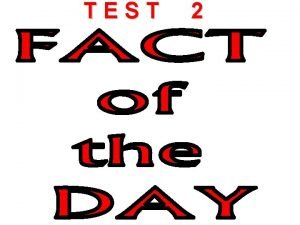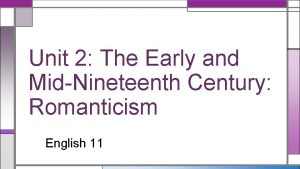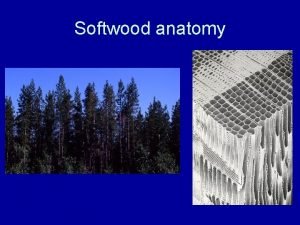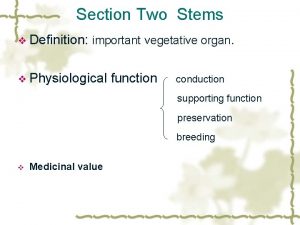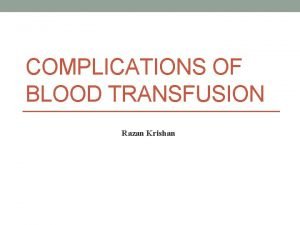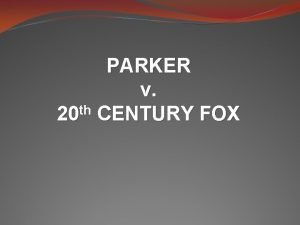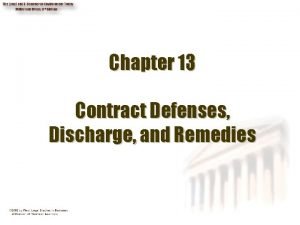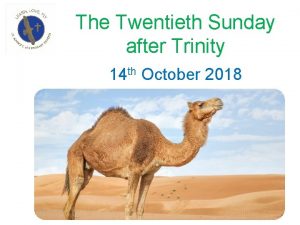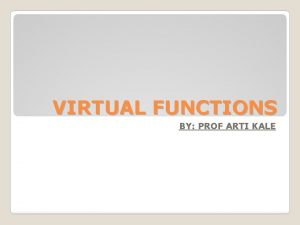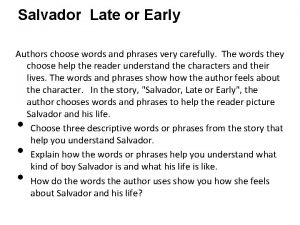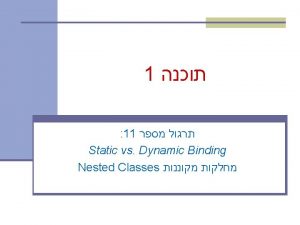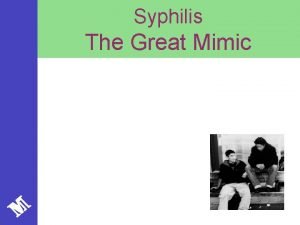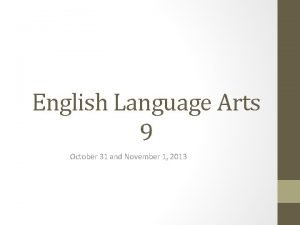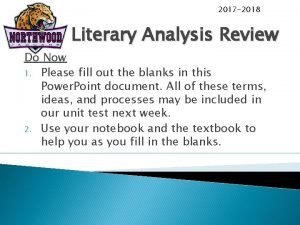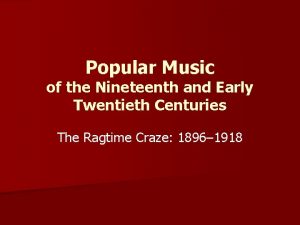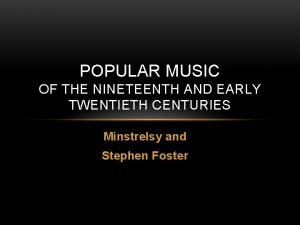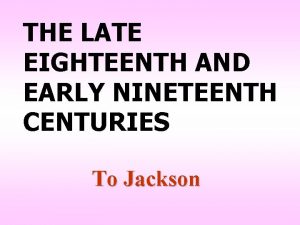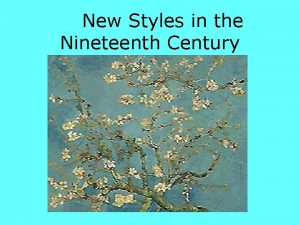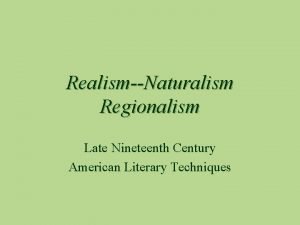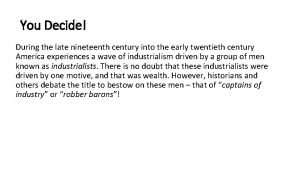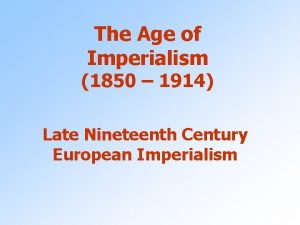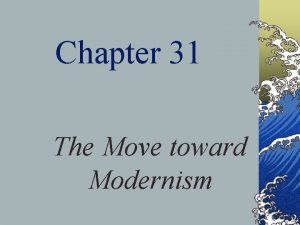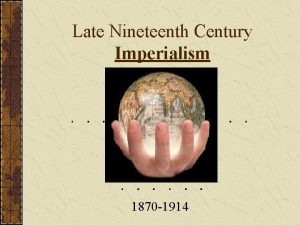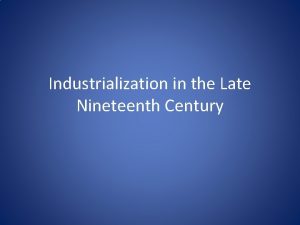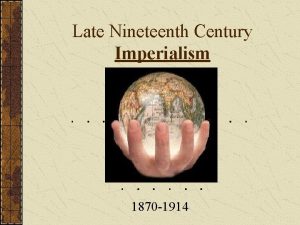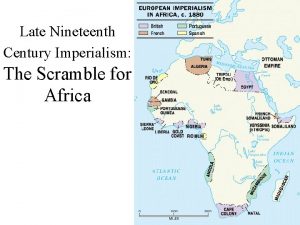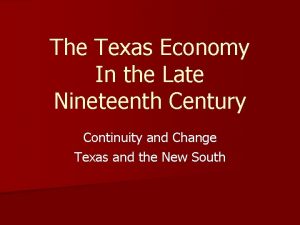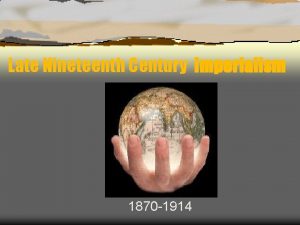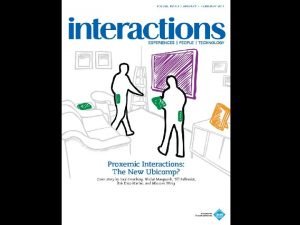Women and Politics Late Nineteenth to Early Twentieth


















- Slides: 18

Women and Politics Late Nineteenth to Early Twentieth Century

Overview • Introduction • Women and Local Government – Politics of the Parish – Parish Office Holding – Women Poor Law Guardians – County Councils • Party Politics – Liberals – Conservatives – Socialists

Parishes • • • Local government in the nineteenth century was confused and overlapping Electoral processes depended upon custom and local precedent rather than regulation from the centre. This produced opportunities for women to participate, and to exercise authority, in their local neighbourhoods. The civil parish remained the primary unit of local government until late nineteenth century. By the mid nineteenth century there were over 15, 000 parishes compared with only 1, 000 other local government institutions. Main parish officers were the churchwardens, overseers of the poor, surveyors of the highways, and constables. There were also a number of elected parish servants which often included sextons, parish or vestry clerks, beadles, scavengers, and the master and mistress of the workhouse. Rudolph Gneist calculated that five per cent of the adult male population held parish office each year in 1800 – a total of around 100, 000 people. David Eastwood has estimated that around 400, 000 people were attending parish meetings by the turn of the nineteenth century.

Female Office Holding Date Place Office 1800 Hampstead, Middx Board of Guardians included Lady of Manor 1800 Paddington, Middx Pew opener 1800 Stoke Newington, Middx Sextoness 1807 Wormingford, Essex Parish offices including churchwarden, overseer, surveyor, constable 1808 Copford, Essex Overseer supervised workhouse supplies 1811 Stoke Newington, Middx Sextoness 1814 Wormingford, Essex Parish offices including churchwarden, overseer, surveyor, constable 1819 Stoke Newington, Middx Sextoness (office considered a charity as the oldest of 4 candidates all women was chosen) 1828 Minshull Vernon, Cheshire Constable, overseer, supervisor 1831 County Wexford, Ireland Sextoness 1838 -40 Norfolk Parish Clerk 1854 Misson, Notts Overseer 1866 Harrow, Middx Sextoness (had to find an assistant her duties mainly confined to pew opening)

Women Poor Law Guardians • Women were also able to hold office as poor law guardians not tested in law until 1875 when Martha Merrington was returned for the Kensington • Other high-profile candidates: Harriett Mc. Ilquham (Boddington, Tewkesbury Union, 1881: first married woman guardian), Eva Mc. Laren (Lambeth, 1882), Helena Shearer (Islington, 1884 although she was later disqualified from serving) and Louisa Twining (Kensington, 1888) • Women campaigners asserted the specific contribution of women regarding the work of the Poor Law Guardians • Educated women in electoral process itself


Women voters in a parish election in Lichfield, 1843

Occupations of Lichfield female voters Occupation Total Of independent means 4 Proprietor of house and land 1 Butcher 1 Publican 1 Dressmaker 1 Laundress 2 Washerwoman 1 Pauper 2 Female Servant 1 Not stated 5

Occupation of municipal voters, Basingstoke 1869 -70 Occupation No occupation given Number 14 Annuitant 9 Dressmaker/Seamstress 9 Laundress 9 Retailer 9 Servant/service 6 Innkeeper 6 Schoolmistress/assistant 5 Landowner/independent means 4 Other 3

County Councils • • • Women ratepayers received further rights to vote in town councils in 1882 and for County Councils in 1888 London County Council had 118 councillors elected by household suffrage and could also co-opt Act stated that ‘every person shall be qualified to be a councillor who is qualified to elect to the office of a councillor’. Women’s rights campaigners established ‘The Society for Promoting the Return of Women as County Councillors’ Jane Cobden, Margaret Sandhurst and Emma Cons became Councillors In February 1890 the women retook their seats making powerful statements to the Council. Emma Cons, for example, stated: – My feelings on the subject of women councillors are as strong as ever, and I shall neglect no means in my power to secure a perfect freedom of choice to the ratepayers, and equal municipal rights for women as for men. It is a bitter experience when one for the first time fully realizes that even a long life spent in the service of one’s fellow citizens is powerless to blot out the disgrace and crime (in the eyes of the law) of having been born a woman. • Disenfranchised by court action but Women’s Local Government Society continued to campaign for the election of female councillors and finally achieved their aim in 1907



Liberal Party • Strong links between liberalism and feminism • Women’s Liberal Federation was established in 1887 • Dominated by women suffragists who viewed the local associations as a means of keeping the party alert to women’s rights issues. • Membership of the WLF was 75, 000 in 1892 rising to 133, 215 by 1912. • WLF educated women into political processes (including voting and holding office in local government); undertook administration associated with the expanded electorate; encouraged all women eligible to vote in local elections to register and vote; pushed for greater female representation on bodies such as school boards • WLF largest female political party organisation and the most effective but fractured by the women’s suffrage question


Conservative Party • Organisation of Conservative women occurred under the auspices of the Primrose League founded in 1883 in England Wales and 1884 in Scotland • Defended traditional pillars of society: Church, Crown and Empire. Harked back to a romantic medievalism. League branches were Habitations and its members were Knights and Dames. The League was ruled by a Grand Council. • By the early twentieth century the League membership exceeded one million members. Female membership was around 49 per cent. • Organised entertainments; administered elections; canvassed voters; ran political meetings; distributed propaganda eg by Cycling Corps • Were limits and their activities were governed by men


Socialist Parties • • Women played key roles in Independent Labour Party and Social Democratic Federation. Demanded inclusion in politics on more radical terms than those used by Conservative or Liberal women. Equality was harder to achieve in practice particularly for working class women Women rarely took on key branch roles focusing instead on the social side of the movement. Women who took on national roles were often from the middle class. Separate women’s groups began to attach to local branches of the ILP and SDF in the 1890 s. In Scotland, the Glasgow Women’s Labour Party sent delegates to the ILP annual conference and devised their own election manifesto. SDF approved the formation of women’s socialist circles in 1904. Involved in educational work, the national association drawing up a syllabus and providing specially commissioned essays so all members could participate in weekly discussions. Women’s Labour League founded in 1906 had 100 branches by 1911. Ran afternoon meetings to maximise attendance and balanced political instruction, education and recreation. Organised campaigns around child welfare. Provided food and clothing for strikers children.

 Horace taylor, the verdict, september 25, 1899
Horace taylor, the verdict, september 25, 1899 The early and mid-nineteenth century romanticism
The early and mid-nineteenth century romanticism Softwood anatomy
Softwood anatomy Aerial stem modification examples
Aerial stem modification examples Early and late complications of blood transfusion
Early and late complications of blood transfusion Early and late complications of blood transfusion
Early and late complications of blood transfusion Tooth development
Tooth development Parker v 20th century fox
Parker v 20th century fox Parker v twentieth century fox
Parker v twentieth century fox Twentieth sunday after trinity
Twentieth sunday after trinity Arti kale
Arti kale Salvador late or early author's purpose
Salvador late or early author's purpose Early vs late wood
Early vs late wood What is static binding
What is static binding Early vs late syphilis
Early vs late syphilis Welcome to our class
Welcome to our class Salvador late or early answer key
Salvador late or early answer key Salvador late or early theme
Salvador late or early theme Early cpr and early defibrillation can: *
Early cpr and early defibrillation can: *
